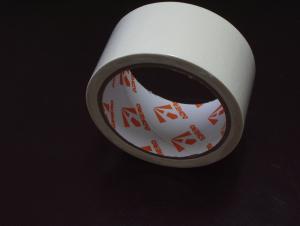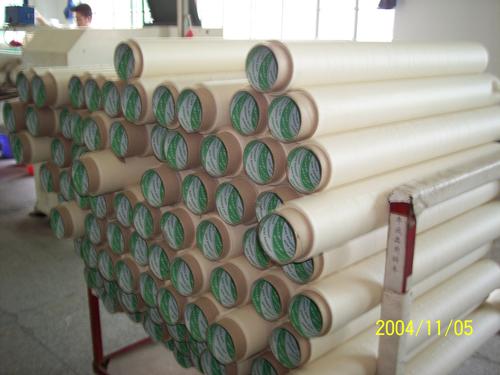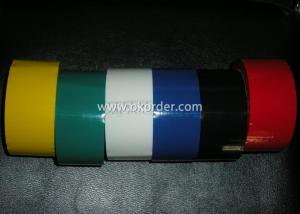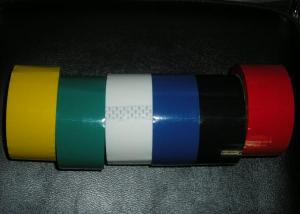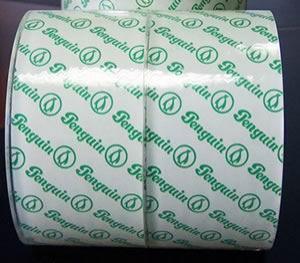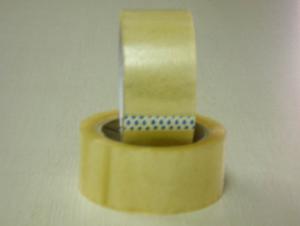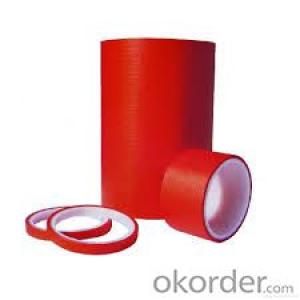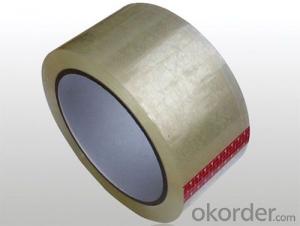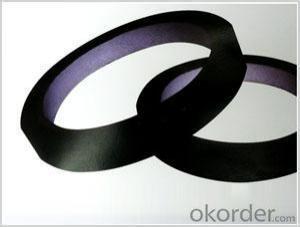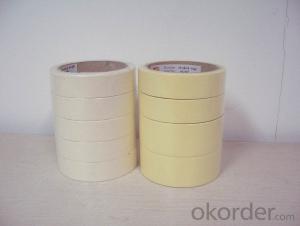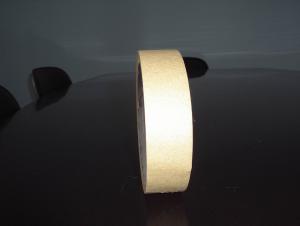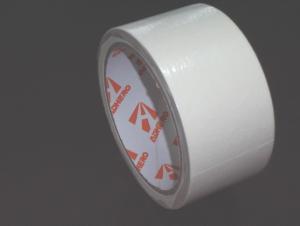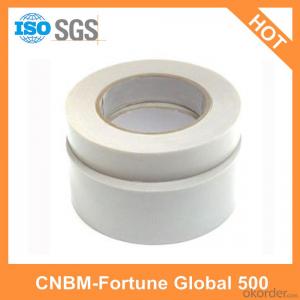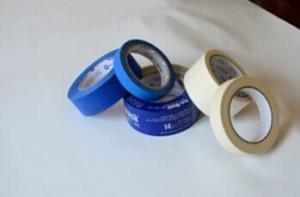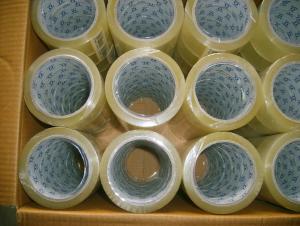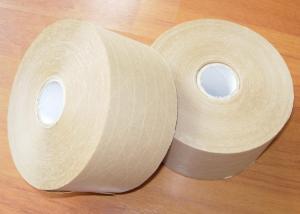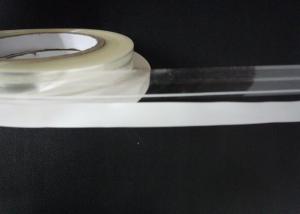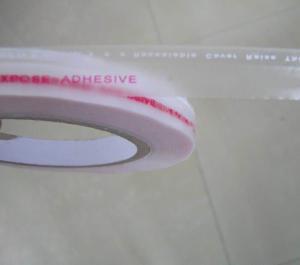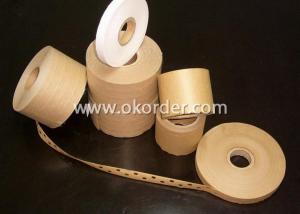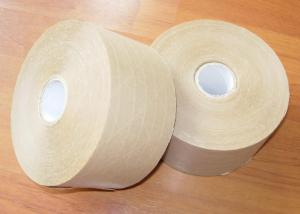Brown Rubber Adhesive Masking Tape with Bull Packaging Tape Feature
- Loading Port:
- China main port
- Payment Terms:
- TT or LC
- Min Order Qty:
- 3000 roll
- Supply Capability:
- 1000000 roll/month
OKorder Service Pledge
OKorder Financial Service
You Might Also Like


Quick details of Masking Tape
Material: Crepe Paper
Use: Decoration , Car Painting
Adhesive Side: Single Sided
Adhesive: Rubber
Place of Origin: China (Mainland)
color: natural, white, yellow, black, green, red, black, blue, etc.
Specifications of Masking Tape
| Item No. | Carrier | Adhesive | Total Thickness | Initial Tack | Holding Power | Tensile Strength | Elongation | Temperature resistance | UV resistance |
| MY580 | crepe paper | rubber | 160 micron | 10# | 2h | 16N/cm | <12% | 60DC | -- |
| MY690 | crepe paper | rubber | 150 micron | 8# | 3h | 16N/cm | <12% | 60DC | -- |
| MY6929 | crepe paper | rubber | 150 micron | 10# | 3h | 16N/cm | <10% | 80DC | -- |
| M110 | crepe paper | rubber | 160 micron | 8# | 3h | 26N/cm | <10% | 110DC | -- |
| M130 | crepe paper | rubber | 160 micron | 13# | 4h | 26N/cm | <10% | 130DC | -- |
| M07 | crepe paper | rubber | 130 micron | 9# | 3h | 26N/cm | < 20% | 60DC | -- |
| M08 | crepe paper | rubber | 130 micron | 10# | 5h | 26N/cm | <16% | 70DC | -- |
| M09 | crepe paper | rubber | 145 micron | 12# | 10h | 24N/cm | <20% | 80DC | -- |
| M20F | crepe paper | water based acrylic | 140 micron | 10# | 10h | 26N/cm | <20% | 90DC | 7 days |
Application of Masking Tape
MY580, MY690, MY6929, M07, M08 are mainly used for room temperature application such as interior painting masking, silk screening, light duty packaging, bunding, holding, splicing & tabbing, and other non-critical applications where a pressure-sensitive tape is needed. MY110, MY130, M09 are mainly used for high temperature application such as car painting etc. M20F is for UV resistant application....
Packing of Masking Tape
Paper Core ID: 76mm
Jumbo size: 0.99m x 1800m, 1.22m x 1800m, 1.51m x 1800m
Cut roll size: As per customer's requirement
Cut rolls: Shrink package, placed in cartons, with or without pallet
Jumbo rolls & log rolls: Packed with kraft paper and stretch wrap film, with or without pallet
Cut rolls: Shrink package, placed in cartons, with or without pallet
Jumbo rolls & log rolls: Packed with kraft paper and stretch wrap film, with or without pallet
FAQ
We have organized several common questions for our clients,may help you sincerely:
①How about your company?
A world class manufacturer & supplier of castings forging in carbon steel and alloy steel,is one of the large-scale professional investment casting production bases in China,consisting of both casting foundry forging and machining factory. Annually more than 8000 tons Precision casting and forging parts are exported to markets in Europe,America and Japan. OEM casting and forging service available according to customer’s requirements.
②How to guarantee the quality of the products?
We have established the international advanced quality management system,every link from raw material to final product we have strict quality test;We resolutely put an end to unqualified products flowing into the market. At the same time, we will provide necessary follow-up service assurance.
③How long can we receive the product after purchase?
In the purchase of product within three working days, We will arrange the factory delivery as soon as possible. The pecific time of receiving is related to the state and position of customers.Commonly 7 to 10 working days can be served.
- Q: Is packaging tape safe to use on plastic shower curtains?
- Packaging tape is generally considered safe for use on plastic shower curtains. Its design allows it to adhere to various surfaces, including plastic. However, it is essential to take into account the specific type of plastic used in your curtain and the condition of the tape. If the plastic is delicate or prone to damage, it is advisable to perform a small test in an inconspicuous area to ensure that the tape does not cause any discoloration or harm. Moreover, if the curtain is frequently exposed to water or moisture, it is recommended to use a waterproof or water-resistant tape to prevent any potential issues. In conclusion, as long as the plastic is sturdy and the tape is in good shape, packaging tape can be a reliable and safe option for temporarily securing or fixing plastic shower curtains.
- Q: Can packaging tape be used for sealing glass jars?
- Indeed, sealing glass jars is possible with packaging tape. However, it should be noted that packaging tape is not specifically designed for this purpose and more suitable alternatives are available. While packaging tape can offer a temporary seal, it may not be as effective in preserving the freshness and airtightness of the jar's contents. Furthermore, the tape may not adhere well to glass surfaces and could peel off over time, potentially compromising the seal. For optimal results in preserving the contents of glass jars, it is recommended to utilize specialized methods and materials such as rubber gaskets, metal lids with screw caps, or heat-sealing techniques.
- Q: Is packaging tape safe to use on mirrors?
- In general, using packaging tape on mirrors is considered safe. This tape is known for its strength and adhesive properties, which are intended to effectively hold objects in place. Nevertheless, it is crucial to consider the specific type of packaging tape being used, as it can impact the tape's safety when applied to mirrors. Opting for clear packaging tapes or tapes specially made for glass surfaces is typically the wisest choice in order to prevent any potential harm or residue on the mirror. Moreover, it is advisable to conduct a preliminary test on a small, inconspicuous area of the mirror to ensure proper adhesion and to avoid any potential damage.
- Q: Are there different colors of packaging tape?
- In the market, one can find various colors of packaging tape. Although clear is the most commonly used color, there are also options like brown, white, black, and even vibrant choices such as red, blue, green, and yellow. The multiple colors of packaging tape serve different purposes. For instance, brown tape is frequently employed for sealing boxes and packages, white tape is commonly used for labeling or writing on, and colored tapes can be utilized for color-coding or enhancing the appearance of packages. The presence of diverse colors enables individuals and businesses to select the tape that best suits their specific requirements.
- Q: Does packaging tape come in different allergen-free options?
- Indeed, various allergen-free alternatives exist for packaging tape. Numerous manufacturers provide packaging tape that is explicitly formulated to be hypoallergenic, devoid of typical allergens like latex, gluten, and other potential irritants. These options without allergens prove especially advantageous for individuals with sensitive skin or allergies. It is highly advisable to thoroughly peruse the product labels or descriptions to guarantee that the packaging tape aligns with your precise allergen-free needs.
- Q: Can packaging tape be used for sealing plastic bottles?
- Indeed, the utilization of packaging tape in sealing plastic bottles is possible. Designed with the purpose of providing a secure and tight seal on various surfaces, including plastic, packaging tape boasts robust adhesion. Consequently, it effectively ensures the security and protection of the bottle's contents. Nevertheless, it is crucial to acknowledge that packaging tape may not match the efficacy of specialized bottle sealing alternatives like bottle caps or seals. These alternatives are exclusively crafted for plastic bottles and offer a more dependable and leak-proof seal. Consequently, although packaging tape can serve as a temporary solution, it is advisable to employ proper bottle sealing options for the long-term storage or transportation of liquids.
- Q: Does packaging tape come in different colors?
- Packaging tape indeed comes in various colors. Although clear is the most commonly used color, there is a wide range of colors to choose from to cater to different requirements and personal preferences. For instance, red, blue, green, yellow, and black are some examples of colored packaging tape. These colored tapes serve multiple purposes, such as color-coding packages, indicating priority shipments, or adding a vibrant touch to your packaging. Moreover, colored packaging tape offers versatility as it can be used for decorative or artistic intentions, making it a suitable choice for both practical and creative uses.
- Q: Can packaging tape be used for sealing moving boxes?
- Yes, packaging tape is commonly used for sealing moving boxes. It provides a strong and secure seal, ensuring that the boxes remain closed and the contents are protected during transportation.
- Q: Is packaging tape resistant to extreme pressure or weight?
- The purpose of packaging tape is to secure packages with a strong and reliable seal. However, the ability of the tape to withstand extreme pressure or weight can differ depending on its type and quality. Typically, packaging tapes are crafted from resilient materials such as polypropylene or polyester, enabling them to endure typical handling and transportation pressures. Nevertheless, it should be noted that packaging tape might not withstand excessively heavy loads or excessive pressure. In such instances, it is suggested to enhance the tape's strength by adding extra layers or employing heavy-duty tapes that are explicitly designed for high-pressure or weight-bearing purposes.
- Q: What type of rubber tape and hot-melt tape?
- 1, the definition of duct tape tape to textile fiber cloth as the substrate. Coated with high viscosity synthetic glue, has a strong peeling force, tensile resistance, oil resistance, aging resistance, temperature resistance, waterproof, corrosion resistance, is a relatively high adhesive tape.
Send your message to us
Brown Rubber Adhesive Masking Tape with Bull Packaging Tape Feature
- Loading Port:
- China main port
- Payment Terms:
- TT or LC
- Min Order Qty:
- 3000 roll
- Supply Capability:
- 1000000 roll/month
OKorder Service Pledge
OKorder Financial Service
Similar products
Hot products
Hot Searches

